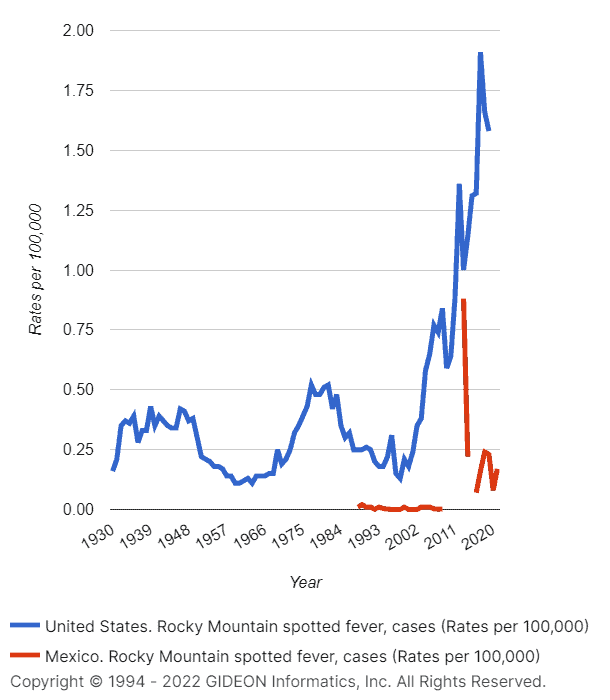History
Rocky Mountain Spotted Fever (RMSF) was first discovered in the 1890s in Idaho. The disease used to be called the ‘black measles’ because one of the characteristic symptoms was a dark, purplish skin rash. It wasn’t until 1906 that a pathologist, Dr. Howard T. Ricketts discovered that ticks spread the disease. A few years later, he had isolated the pathogen, Rickettsia rickettsii. Dr. Rickett’s pioneering work with RMSF fueled the discovery of other ricketts-related diseases in future years [3, 4].
RMSF infections can be severe and fatal. RMSF had a high mortality rate until the 1920s, when a high-profile tragedy changed the course of research related to the disease. In 1922, the Governor of Montana lost his daughter and son-in-law to RMSF. This loss funneled attention and research on RMSF at the Rocky Mountain laboratories in Montana.
The next significant milestone in the history of Rocky Mountain spotted fever was the discovery of a vaccine. In 1924, Dr. Roscoe Spencer and his associate, Ralph Parker, are credited for discovering the Spencer-Parker vaccine against RMSF. As part of his research, Dr. Spencer injected himself with the disease-causing bacteria to study the immune response [3].
The vaccine was successful at the time in preventing RMSF-related deaths in humans. However, when effective antibiotics to treat RMSF were discovered in the 1940s, the Spencer-Parker vaccine against RMSF became obsolete [5].
The story of RMSF research is one of grit and good old-fashioned elbow grease in research, even under severe resource constraints. For example, Drs. Spencer and Parker discovered the vaccine in Canyon Creek Schoolhouse Laboratory, an old school.
Eventually, as state and federal interest in RMSF grew, Montana became the epicenter of tick-borne research in America. In 1927, the Board of Etymology began building a larger lab in Hamilton, Montana. The news of this construction was met with much hostility from local residents who were fearful of the tick infestation spreading across their town. This lab was eventually built and called Rocky Mountain Laboratories (RML). Ten years after it was developed, RML became a part of the National Institute of Allergy and Infectious Diseases (NIAID) of the National Institutes of Health [3, 4].
These twists and turns inspired the 1937 blockbuster hit movie starring Errol Flynn in a (surprisingly) non-swashbuckling role. The movie ‘Green Light’ was the second highest-grossing movie of the year.
